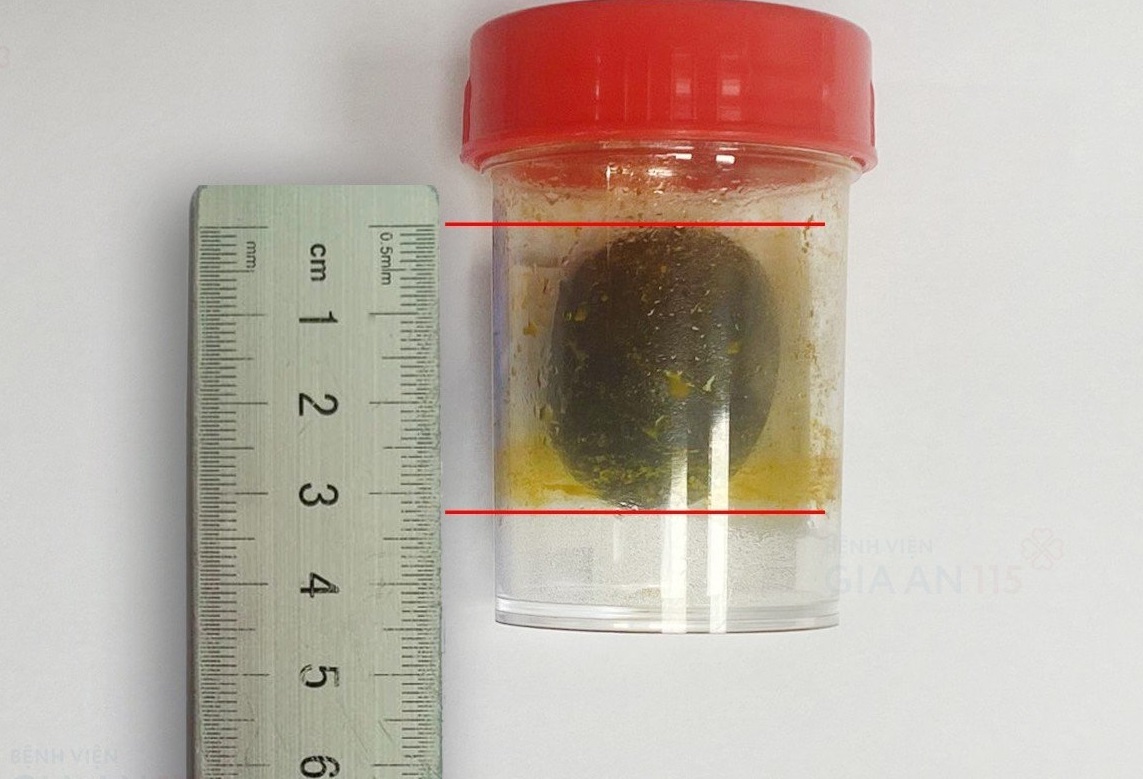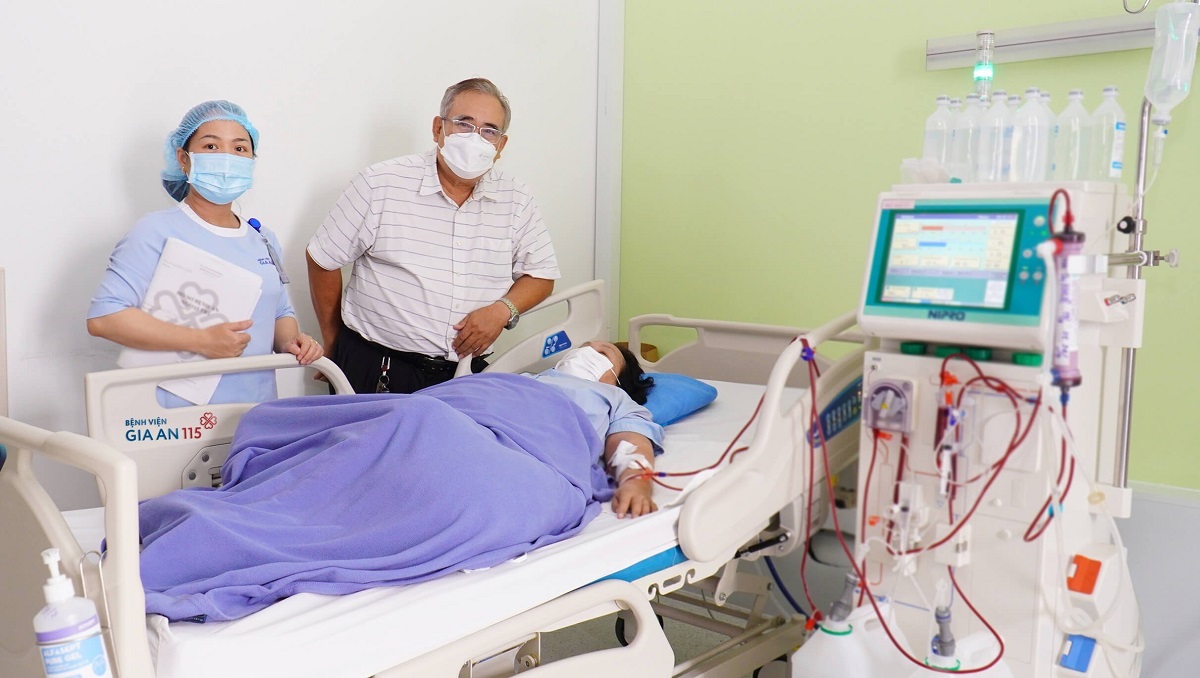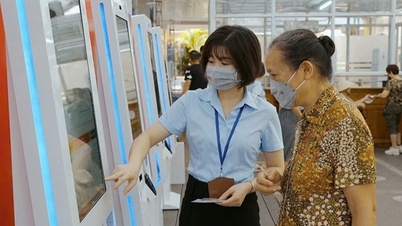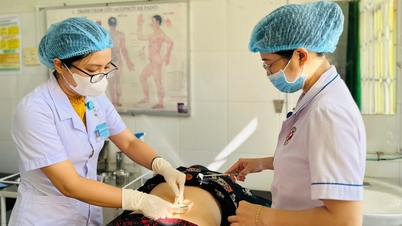On May 5, Master - Doctor Nguyen The Toan - Head of Surgery Department, Gia An 115 Hospital, said that after receiving the information, the team quickly performed the necessary clinical tests, thereby promptly detecting the disease.
Paraclinical results showed that the patient had acute cholecystitis due to stones, with gallbladder neck stones measuring 26x20 mm and stones in the distal part of the common bile duct measuring 12x14 mm causing dilation of the common bile duct.

Gallbladder neck stones after removal
"Although it has not caused biliary obstruction, the gallbladder is already distended. If not treated promptly, it can lead to gallbladder tissue necrosis and gallbladder rupture, leading to risks such as peritonitis, sepsis, and even death," said Dr. Toan.
In this condition, the patient needs to have the common bile duct stones removed and the gallbladder removed immediately. However, the use of anticoagulants due to regular hemodialysis will increase the risk of surgery because it increases the risk of bleeding. In addition, the patient's age and obesity are also factors that increase the risk.
After consultation between the doctors of the Department of Surgery and the Nephrology - Artificial Kidney Unit, the doctors decided to perform 2-in-1 surgery for the patient. This included endoscopic retrograde cholangiopancreatography to cut the sphincter to remove common bile duct stones and endoscopic cholecystectomy for the patient.

Patient recovering after surgery
Fortunately, the surgery was extremely successful. After surgery, the patient received intensive care, combined with regular dialysis according to schedule. The patient was discharged in stable condition, no abdominal pain, no fever, and the surgical wound was dry.
Do not be subjective with stomach pain
Dr. Toan said that cholecystitis without complications has a good prognosis, low mortality rate, and if treated properly, symptoms can be reduced after 1-4 days. Cholecystitis with complications of necrosis or perforation causing biliary peritonitis has a worse prognosis.
Therefore, when the first symptoms of gallbladder inflammation appear, the patient needs to go to a medical facility for timely diagnosis and intervention. It can be a colic pain in the epigastric region or right hypochondrium, in some cases the pain spreads to the right shoulder. After that, the patient may have a fever. If not intervened, the patient may have severe pain, high fever, obvious signs of infection such as dry lips, dirty tongue, bad breath, fatigue, lethargy, etc.
If painkillers, antipyretics are used arbitrarily or treatment is delayed, cholecystitis can progress and cause unpredictable complications. As in the case of the patient above, fortunately, thanks to close monitoring and timely clinical indications from the Nephrology - Artificial Kidney doctors, the patient was discovered to have cholecystitis and biliary obstruction due to common bile duct stones and was treated immediately, avoiding unnecessary risks.
Source link


![[Photo] General Secretary To Lam concludes visit to Russia, departs for Belarus](https://vphoto.vietnam.vn/thumb/1200x675/vietnam/resource/IMAGE/2025/5/11/0acf1081a95e4b1d9886c67fdafd95ed)
![[Photo] General Secretary To Lam meets and expresses gratitude to Vietnam's Belarusian friends](https://vphoto.vietnam.vn/thumb/1200x675/vietnam/resource/IMAGE/2025/5/11/c515ee2054c54a87aa8a7cb520f2fa6e)


![[Photo] General Secretary To Lam arrives in Minsk, begins state visit to Belarus](https://vphoto.vietnam.vn/thumb/1200x675/vietnam/resource/IMAGE/2025/5/11/76602f587468437f8b5b7104495f444d)


















![[Photo] National Assembly Chairman Tran Thanh Man attends the Party Congress of the Committee for Culture and Social Affairs](https://vphoto.vietnam.vn/thumb/1200x675/vietnam/resource/IMAGE/2025/5/11/f5ed02beb9404bca998a08b34ef255a6)

































































Comment (0)